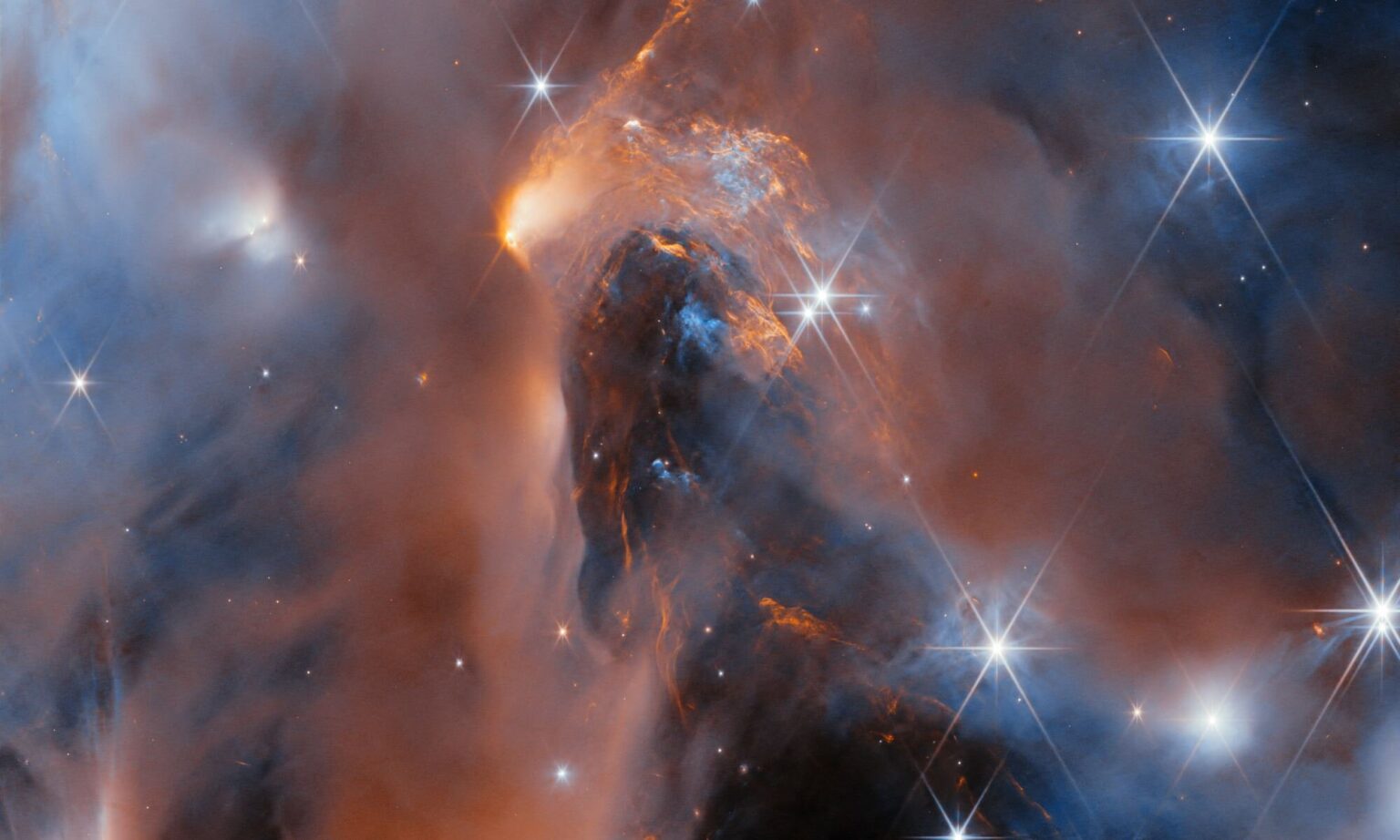“Rogue planets” or “orphan planets” are bodies with masses comparable to Earth or Jupiter, but not orbiting any stars. Recently, the James Webb Space Telescope helped detect six such objects.

What are rogue planets?
Rogue planets, or as astronomers officially call them, free-floating planetary mass objects (FFPMOs), are planet-sized bodies that either formed in interstellar space or were part of a planetary system before gravitational disturbances pushed them out of there.
Since they were first observed in 2000, astronomers have discovered hundreds of candidates that are not bound to any particular star and are floating in the interstellar medium of our galaxy. In fact, some scientists estimate that as many as 2 trillion rogue planets may roam the Milky Way alone.
Recently, a team of astronomers working with the James Webb Space Telescope announced the discovery of rogue planets in an unlikely place. Six objects, including one record-breakingly light (with a disk of debris around it), were discovered during the deepest study of the young nebula NGC 1333, a star-forming region about a thousand light-years away in the constellation Perseus. Scientists say they can tell us a lot about how the luminaries are born.
The research team was led by Adam Langeveld, an assistant professor in the Department of Physics and Astronomy at Johns Hopkins University (JHU). A paper describing the results of the study has been accepted for publication in The Astronomical Journal and is available on the arXiv preprint server.
How were the new lone planets discovered?
Most of the rogue planets discovered to date have been discovered by gravitational microlensing, while others have been discovered by direct imaging. The first method is based on the gravitational lensing effect, where the gravity of massive objects changes the curvature of space-time around them and amplifies light from more distant objects. The latter consists of detecting brown dwarfs (objects on the boundary between planets and stars) and massive planets directly by detecting the infrared radiation generated in their atmospheres.
In their paper, the team describes how this discovery happened during their deepest spectroscopic study of NGC1333. Using data from Webb’s Near-Infrared Imager and Slitless Spectrograph (NIRISS) telescope, the team measured the spectrum of each object in the observed part of the star cluster. This allowed them to reanalyze the spectra of 19 previously observed brown dwarfs and led to the discovery of a new brown dwarf with a planetary-mass companion.
This last observation was a rare finding, already challenging theories of binary system formation. But the real discovery was the discovery of six planets with masses five to ten times that of Jupiter (the so-called super-Jupiters).
Six new “free-floating” worlds
The six candidates just discovered are among the smallest massive rogue planets ever found and formed in the same process as brown dwarfs and stars. This was the goal of the “Deep Spectroscopic Survey for Young Brown Dwarfs and Free-Floating Planets” study, which was to study massive objects not large enough to become stars.
The fact that James Webb’s observations, which have not detected objects less than five Jupiter masses (it is sensitive enough to detect), is strong evidence that stellar objects lighter than it are more likely to form in the same way as planets.
Planet formation from debris disks
The most intriguing of the rogue planets was also the lightest: about five Jupiter masses (about 1600 Earth masses). Since dust and gas are usually trapped in the disk in the early stages of star formation, the presence of this debris ring around a single planet strongly suggests that it formed in the same way as the stars.
However, planetary systems are also formed from debris disks (called circumstellar disks), indicating that these objects can form their own companions. This suggests that these massive planets may be a nursery for a miniature planetary system similar to our Solar System, but on a much smaller scale.
Said Johns Hopkins Provost Ray Jayawardhana, an astrophysicist and senior author of the study (who also leads the research team): “It turns out the smallest free-floating objects that form like stars overlap in mass with giant exoplanets circling nearby stars. It’s likely that such a pair formed the way binary star systems do, from a cloud fragmenting as it contracted. The diversity of systems that nature has produced is remarkable and pushes us to refine our models of star and planet formation…
Future plans of the researchers
In the coming months, the team plans to use James Webb to further investigate the atmospheres of these rogue planets and compare them to those of brown dwarfs and gas giants. They also plan to search the star-forming region for other objects with debris disks to explore the possibility of mini-planetary systems.
The data will help astronomers refine their estimates of the number of rogue planets in our galaxy. Webb’s new observations indicate that such bodies make up about 10% of the celestial bodies in the studied cluster.
Current estimates of the number of stars in our galaxy range from 100 to 400 billion stars, and the number of planets ranges from 800 billion to 3.2 trillion. If you take 10%, that means there are between 90 and 360 billion rogue worlds. Perhaps someday we will be able to explore some of them, and our Sun may even capture a few of them.
According to phys.org


